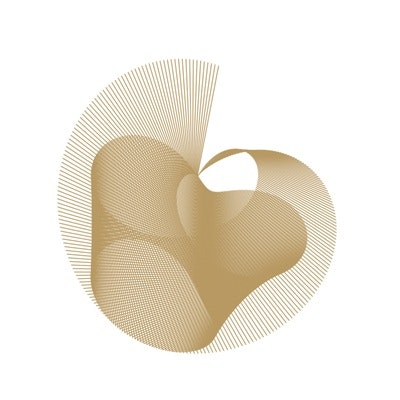
This course is for anyone who would like to apply their technical skills to creative work ranging from video games to art installations to interactive music, and also for artists who would like to use programming in their artistic practice.
Read more
This course is for anyone who would like to apply their technical skills to creative work ranging from video games to art installations to interactive music, and also for artists who would like to use programming in their artistic practice.
This course is for anyone who would like to apply their technical skills to creative work ranging from video games to art installations to interactive music, and also for artists who would like to use programming in their artistic practice.
This course will teach you how to develop and apply programming skills to creative work. This is an important skill within the development of creative mobile applications, digital music and video games. It will teach the technical skills needed to write software that make use of images, audio and graphics, and will concentrate on the application of these skills to creative projects. Additional resources will be provided for students with no programming background.
At the end of this course, you will be able to:
* Write creative, audiovisual programs in the Processing environment that run on desktop and mobile
* Programatically manipulate sound in creative ways
* Display images and image sequences
* Generate interactive, algorithmic graphics
* Work with a 2D physics engine to create a basic game
What's inside
Syllabus
Sonic Painter
This week we are getting up and running with the Processing IDE. We will show you the basics of writing Processing sketches then move onto some graphics and audio concepts. Mick will then introduce our first audiovisual example - SonicPainter, which allows users to interactively paint with synchronised graphics and sound.
Read more
Syllabus
Good to know
Save this course
Reviews summary
Creative coding with processing
Activities
Review basic programming concepts
Show steps
Strengthen your foundation in programming to better understand the course material.
Browse courses on
Programming Fundamentals
Show steps
-
Review your previous programming notes or textbooks
-
Take online quizzes or practice exercises to test your understanding
-
Consider working on a small programming project to apply your refreshed skills
Organize your notes, assignments, and quizzes
Show steps
Stay organized and improve your retention by compiling and reviewing your course materials.
Show steps
-
Create a designated folder or notebook for your course materials
-
Regularly add your notes, assignments, and quizzes to the folder or notebook
-
Take time to review and summarize your materials periodically
Complete tutorials on Processing.org
Show steps
Get hands-on experience with Processing, the programming language used in the course.
Browse courses on
Processing
Show steps
-
Go to Processing.org and sign up for an account
-
Follow the beginner tutorials on the website
-
Experiment with the code and try to create your own sketches
Five other activities
Expand to see all activities and additional details
Show all eight activities
Read 'The Art of Computer Programming'
Show steps
Gain a deep understanding of algorithms and data structures through a classic computer science text.
View
The Art of Computer Programming, Fascicle 7:...
on Amazon
Show steps
-
Read and understand the first few chapters
-
Work through the exercises at the end of each chapter
-
Attend office hours or online forums for additional support
Join a study group or online forum for Processing
Show steps
Connect with other students to discuss the course material, share ideas, and get help with your projects.
Browse courses on
Processing
Show steps
-
Find a study group or online forum that aligns with your interests
-
Attend meetings or participate in discussions regularly
-
Ask questions, share your knowledge, and collaborate with others
Coding challenges on Leetcode
Show steps
Practice coding problems to improve problem-solving skills and programming fundamentals.
Browse courses on
Algorithms
Show steps
-
Sign up for a Leetcode account
-
Solve easy-level problems to get started
-
Gradually move on to medium- and hard-level problems
Create a Processing sketch that generates interactive visuals
Show steps
Apply your knowledge to build a project that demonstrates your understanding of the course concepts.
Browse courses on
Processing
Show steps
-
Plan your project and decide on the visuals you want to generate
-
Write the code to create the visuals and make them interactive
-
Test and refine your project until it works as intended
Write a blog post or article about a topic related to the course
Show steps
Share your knowledge and understanding by creating content that deepens your comprehension of the course material.
Browse courses on
Processing
Show steps
-
Choose a topic that you are passionate about and that aligns with the course content
-
Research your topic and gather information from credible sources
-
Write your blog post or article, ensuring it is well-organized, informative, and engaging
Review basic programming concepts
Show steps
Strengthen your foundation in programming to better understand the course material.
Browse courses on
Programming Fundamentals
Show steps
- Review your previous programming notes or textbooks
- Take online quizzes or practice exercises to test your understanding
- Consider working on a small programming project to apply your refreshed skills
Organize your notes, assignments, and quizzes
Show steps
Stay organized and improve your retention by compiling and reviewing your course materials.
Show steps
- Create a designated folder or notebook for your course materials
- Regularly add your notes, assignments, and quizzes to the folder or notebook
- Take time to review and summarize your materials periodically
Complete tutorials on Processing.org
Show steps
Get hands-on experience with Processing, the programming language used in the course.
Browse courses on
Processing
Show steps
- Go to Processing.org and sign up for an account
- Follow the beginner tutorials on the website
- Experiment with the code and try to create your own sketches
Read 'The Art of Computer Programming'
Show steps
Gain a deep understanding of algorithms and data structures through a classic computer science text.
View
The Art of Computer Programming, Fascicle 7:...
on Amazon
Show steps
- Read and understand the first few chapters
- Work through the exercises at the end of each chapter
- Attend office hours or online forums for additional support
Join a study group or online forum for Processing
Show steps
Connect with other students to discuss the course material, share ideas, and get help with your projects.
Browse courses on
Processing
Show steps
- Find a study group or online forum that aligns with your interests
- Attend meetings or participate in discussions regularly
- Ask questions, share your knowledge, and collaborate with others
Coding challenges on Leetcode
Show steps
Practice coding problems to improve problem-solving skills and programming fundamentals.
Browse courses on
Algorithms
Show steps
- Sign up for a Leetcode account
- Solve easy-level problems to get started
- Gradually move on to medium- and hard-level problems
Create a Processing sketch that generates interactive visuals
Show steps
Apply your knowledge to build a project that demonstrates your understanding of the course concepts.
Browse courses on
Processing
Show steps
- Plan your project and decide on the visuals you want to generate
- Write the code to create the visuals and make them interactive
- Test and refine your project until it works as intended
Write a blog post or article about a topic related to the course
Show steps
Share your knowledge and understanding by creating content that deepens your comprehension of the course material.
Browse courses on
Processing
Show steps
- Choose a topic that you are passionate about and that aligns with the course content
- Research your topic and gather information from credible sources
- Write your blog post or article, ensuring it is well-organized, informative, and engaging
Career center
Mobile Application Developer
Web Developer
Game Developer
Interactive Media Designer
Digital Media Artist
Multimedia Artist
Video Editor
Audio Engineer
Graphic designer
Software Engineer
Computer Scientist
Data Scientist
Machine Learning Engineer
Artificial Intelligence Engineer
Robotics Engineer
Reading list
Share
Similar courses
OpenCourser helps millions of learners each year. People visit us to learn workspace skills, ace their exams, and nurture their curiosity.
Our extensive catalog contains over 50,000 courses and twice as many books. Browse by search, by topic, or even by career interests. We'll match you to the right resources quickly.
Find this site helpful? Tell a friend about us.
We're supported by our community of learners. When you purchase or subscribe to courses and programs or purchase books, we may earn a commission from our partners.
Your purchases help us maintain our catalog and keep our servers humming without ads.
Thank you for supporting OpenCourser.



